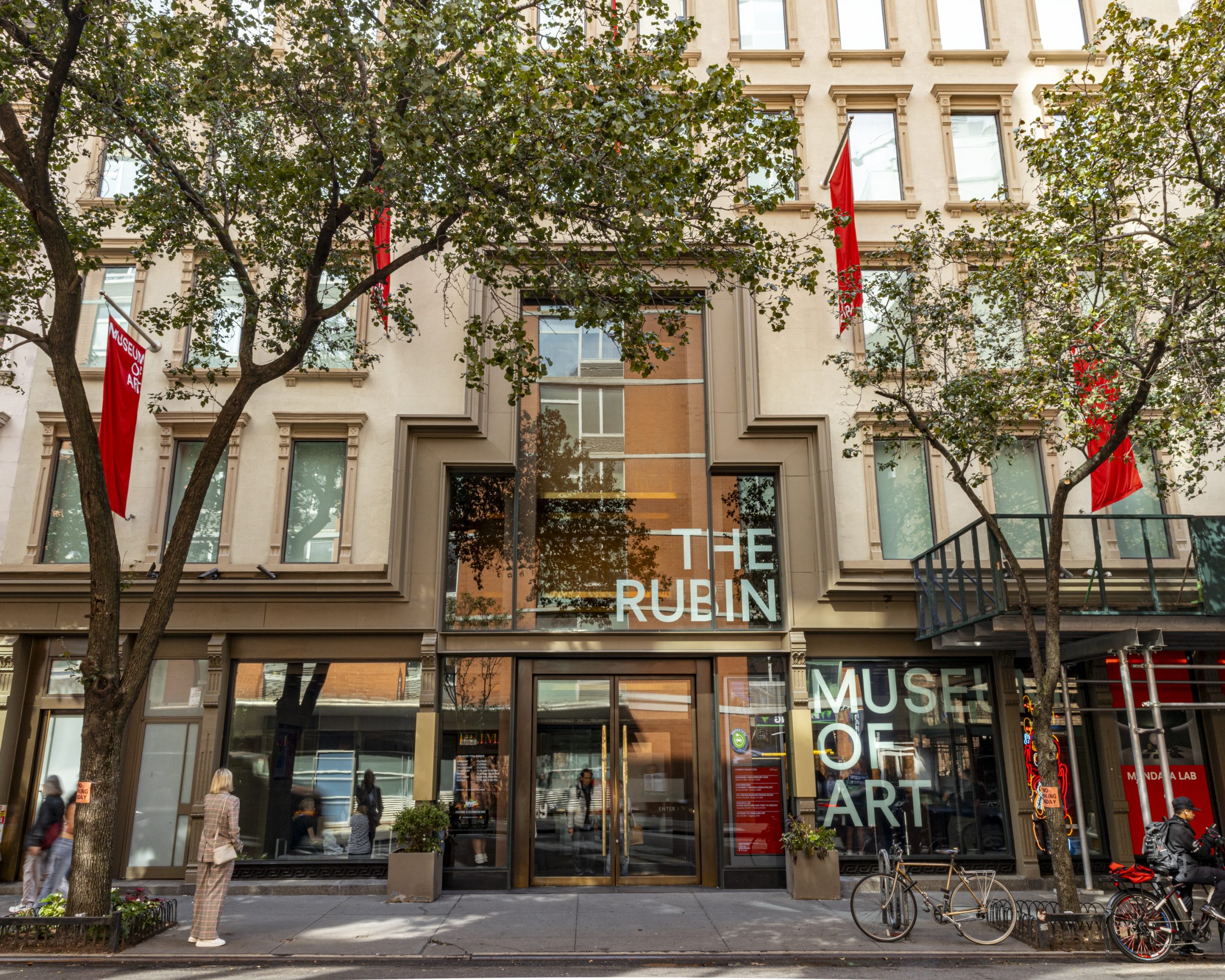Following a two-decade run as the only American museum dedicated entirely to Himalayan art, the Rubin Museum, as we know it, will shutter for good tomorrow, October 6. The institution announced the decision to close in January, at which time it also detailed plans to shift to a decentralized “museum without walls” model. The Rubin will retain some of its collection—an assemblage of nearly 4,000 objects spanning fifteen centuries—and will focus on organizing traveling exhibitions, enriching its grant program, and developing educational resources. What remains will, in theory, carry forward the museum’s mission in a lighter, more nimble format. Its final exhibition, “Reimagine: Himalayan Art Now,” is on view now. If you can make it before the museum closes tomorrow, you’ll find paintings, sculptures, sound installations, videos and performance art by over thirty contemporary artists from the Himalayan region.
Husband-and-wife philanthropists Donald and Shelley Rubin purchased the Rubin Museum building at 150 West 17th Street, a former Barneys department store, in 1998 for $22 million. The building’s tranquil, domed skylight and sweeping spaces would offer a seamless backdrop for the Rubins’ world-class collection. Transforming the 70,000-square-foot space into a haven for Tibetan art was ambitious, if improbable, even for a pair of deep-pocketed collectors. Though the Rubins oversaw extensive renovations, the couple retained as many original details as possible—including the building’s iconic spiral staircase, which became a centerpiece of the museum’s 25,000 square feet of exhibition space. Six years later, in 2004, the Rubin opened and swiftly became a model for culturally immersive museum design. It also eventually became a focus in the ongoing controversy around repatriating stolen artifacts.
Provenance disputes are nothing new in art, but they have been particularly acute for the Rubin, which repatriated two pieces to Nepal in 2022. The museum faced increased scrutiny earlier this year when, in March, activists renewed calls for the museum to take accountability “for decades of violent exploitation of our sacred ancestral objects.” The Tibetan-led campaign Our Ancestors Say No (OASN) has demanded the repatriation of allegedly stolen sacred artifacts, many displayed in the institution’s popular Tibetan Buddhist Shrine Room. Following the Rubin Museum’s closure, over 100 works from the Shrine Room will find a new home at the Brooklyn Museum, via a loan dubbed “another thrilling example of New York City museum collaboration,” by Brooklyn Museum director Anne Pasternak in a statement. Pasternak also pointed out that the Shrine Room has been “a renowned and beloved cultural experience for people around the world” since its opening in 2015. The art and ritual objects will be on loan to the Brooklyn Museum for at least six years, beginning in June of 2025.
For twenty years, the Rubin was praised for thought-provoking exhibitions and its unique approaches to Himalayan art. The museum’s Mandala Lab was celebrated for its interactive, multi-sensory space designed to create immersive, emotionally resonant experiences for visitors. The “Gateway to Himalayan Art” exhibition, on view since 2021, likewise received accolades for its ability to introduce audiences to the complexities and depth of Himalayan artistic traditions. Through these exhibitions and more, the Rubin Museum of Art became more than just a repository for artifacts. If it’s possible to look past the museum’s controversies, the Rubin’s legacy is as a cultural hub for engaging deeply with the spiritual and philosophical underpinnings of Himalayan art, making its closure all the more poignant. While The Rubin is framing its closure as a reimagining of what a museum can be—“more art, accessible to more people, in more places,” as its executive director Jorrit Britschgi put it—the closure of its Chelsea location feels like a loss.
The Rubin Museum of Art’s Final Days: In Photos



















